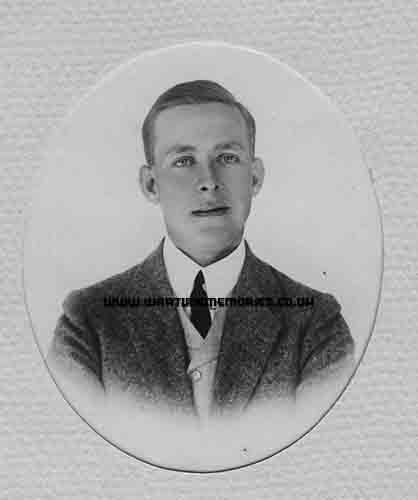Additions will be checked before being published on the website and where possible will be forwarded to the person who submitted the original entries. Your contact details will not be forwarded, but they can send a reply via this messaging system.
please scroll down to send a message
2nd Lt. George Alfred "Limmie" Limouzin
Royal Flying Corps 26 Squadron
from:Ngqeleni, Eastern Cape, SA
George Limouzin, generally known as Limmie, joined the South African Army as a lieutenant in the First City (Grahamstown) Regiment which was soon thereafter amalgamated with the Queenstown Rifle Volunteers and incorporated into the new Union Defence Force as the 4th Infantry (First Eastern Rifles).
He was in Britain in August 1914, possibly seconded to the Royal Garrison Artillery on a training course, because he returned to South Africa having seen action with the British Expeditionary Force at Mons and, possibly, Ypres (for which he was later entitled to wear the 1914 Star). On his return to South Africa he spent several months in what was German South-west Africa (now Namibia) as a flying observer or artillery 'spotter' until the German capitulation in July 1915. At that point he had been invited by Capt. Allister Miller, to join the nascent Zuid Afrikaanse Vlieenier Korps (the predecessor to the South African Air Force) which was to be amalgamated with the Royal Flying Corps to increase the air-power in the European theatre.
George passed his flying licence in a Farman bi-plane at the military school airfield at Shoreham and was awarded an aviator's certificate (No. 2419, dated 29 January 1916) by the Royal Aero Club. He was posted to No. 26 Squadron of the Royal Flying Corps, an essentially South African unit with a motto in Afrikaans: In Wagter in die Lug. The squadron was sent to East Africa and, operating from rough temporary airfields, flew their Farman FE2's on reconnaissance and occasional bombing missions against the German forces in what is to-day Tanzania.
It appears that in early 1918 George, who had been gazetted as a full lieutenant in 1916, fell ill with malaria and had to be shipped home - ironically his route was via the Cape. He was admitted to a military hospital in St.James in the Cape in June 1918, and to the London General in August and, finally, to a military hospital in Colchester in November 1918.
26 Squadron had, however, been disbanded at Blandford in July 1918, so George returned to the Royal Garrison Artillery at Winchester until the end of the war, and was thus entitled to wear the Inter-Allied Victory Medal. He remained with the Royal Garrison Artillery until he relinquished his commission (with the right to retain his rank) on 12 June 1919, entitled to add the 1914/18 General Service medal and the British War Medal to his decorations. He was still in London when the victory was celebrated in July 1919 (and he later recalled drinking champagne at the Cafe Royal at nine pence a glass).
George Limouzin remained on the British Army records and an entry in 1931 shows that he had returned to south Africa at about that time. Precisely what role he played in WWII has not been determined, but his sister, when writing to him in May 1941 addressed the envelope to George as 'staff sergeant' at an address in Pretoria. George Alfred Limouzin died, aged 96, in Pretoria, in 1977; he had willed his body to science so has no memorial.
